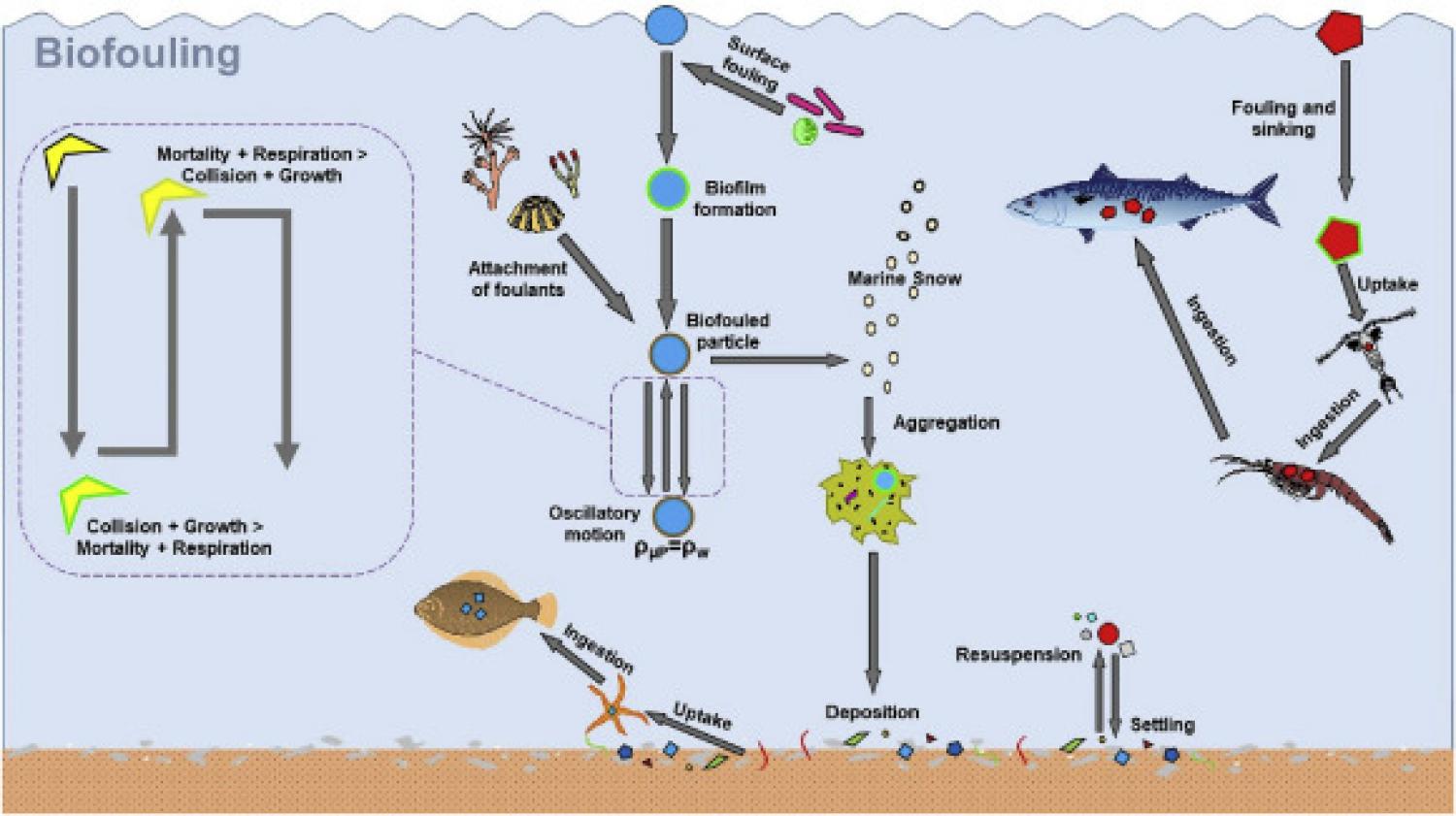
As the global production of plastics continues to accelerate, the ubiquitous presence of microplastics (μPs) has emerged as a significant marine problem. To comprehend fully the potential impacts and ecological harm caused by μPs it is vital that there is an understanding of their potential sources and sinks; the processes affecting their distribution; and their uptake and exchange in ecosystems. We carried out a comprehensive literature review to test the hypothesis that particle density is a key factor in describing the sinking behaviour and vertical distribution of μPs and to consider the uptake and trophic transfer of μPs. It was found that, whilst polymer density is a key factor in determining the vertical distribution of μPs in the water column, interactions with marine organisms better explain the occurrence of buoyant μPs at great depths. Furthermore, these interactions increase μP availability and uptake, leading to trophic transfer and bioaccumulation within the food chain.
